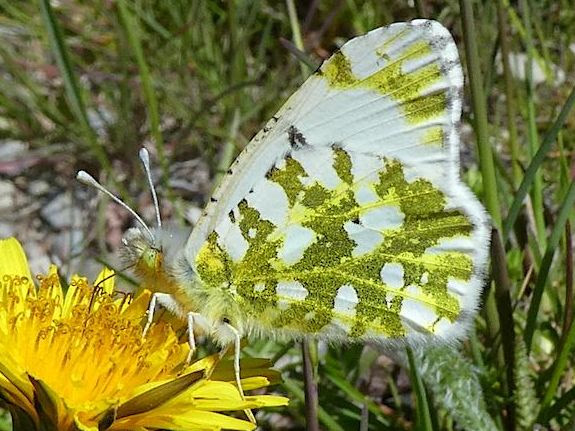We recently learned that a group of butterflies is called a “kaleidoscope,” and we sure have a kaleidoscopic showing this week. The bug activity has exploded with the nice weather over the last few days; fingers crossed it sticks around, so the bugs might, too.
Submit your bug pictures to bugid@missoulabutterflyhouse.org (and remember to include your name, the date, and the location where you took the photo)!
Header Photo: Johnson’s Jumping Spider (Phidippus johnsoni) feeding on California Tortoiseshell (Nymphalis californica) Kristi DuBois, May 11th, 2024. Mineral County, MT.
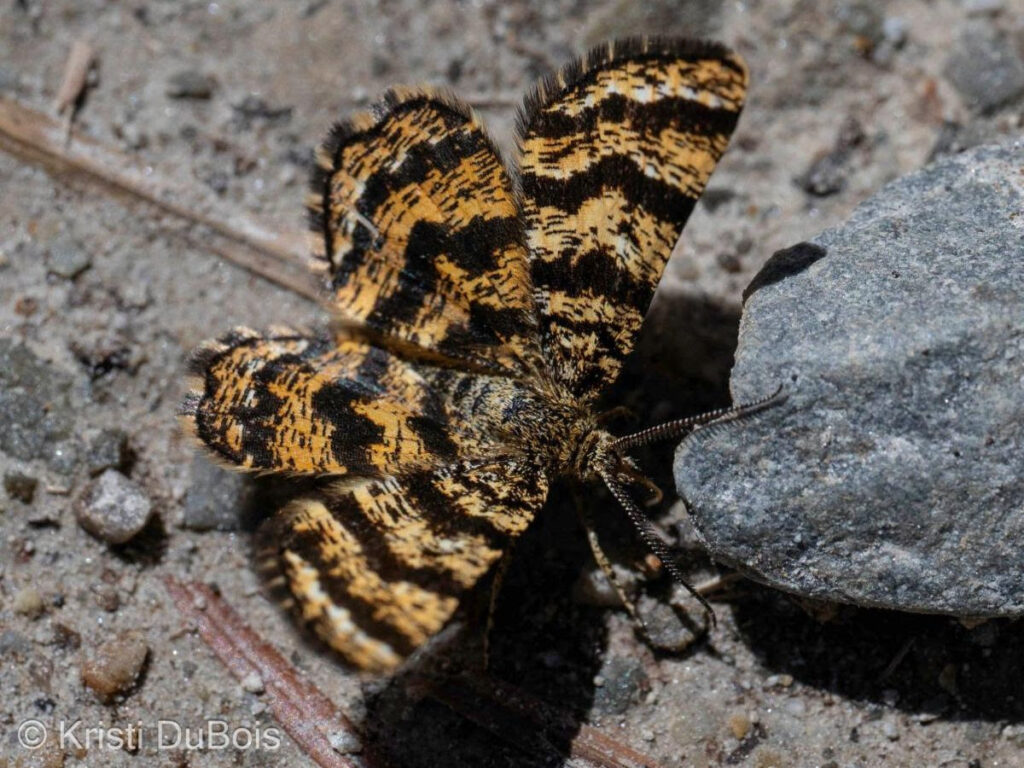
Black-banded Orange
Macaria truncataria
This stunning day-flying moth is typically found in northern climes, from Alaska to Newfoundland and as far south as Colorado (in the west) and Connecticut (in the east); it is absent from much of the Midwest. In the summer, the adult moths lay eggs on their host plants (Bearberry and Leather-leaf); after a couple of weeks, the larvae hatch and begin feeding until they pupate to overwinter. Adults are on the wing in spring and early summer, often seen in open coniferous forests.
Kristi DuBois, May 11th, 2024. Mineral County, MT.
Cuckoo Wasp
Family Chrysididae
Like their namesake, the cuckoo bird, these tiny, bejeweled wasps lay their eggs in the nest of their host species and let other wasp parents do their work for them. Their larvae will consume the provisions provided by their host – and then consume their offspring as well. Their diminutive size means they often go unnoticed, but with over 3,000 described species worldwide (and over 80 genera), these wasps comprise a colossal family within the Hymenopteran order.
Sal Culotta, May 13th, 2024. St. Ignatius, MT.
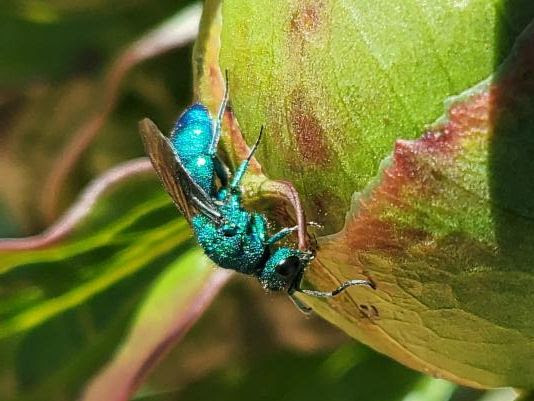
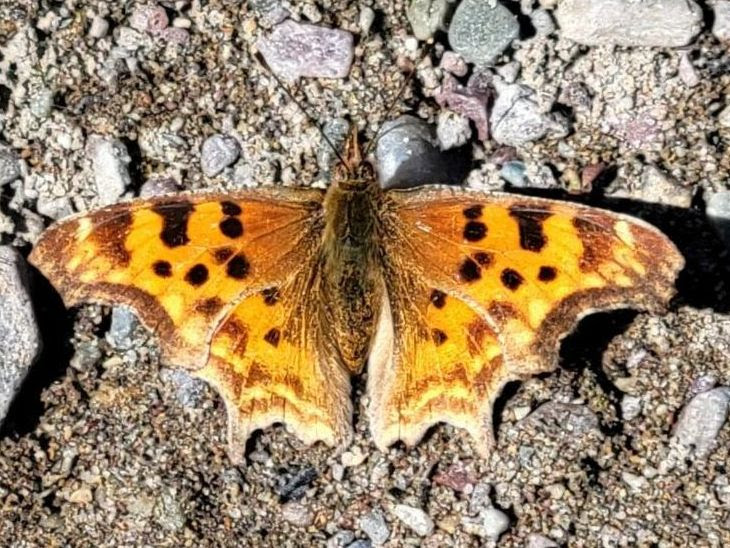
Satyr Comma
Polygonia satyrus
Commas, so named for the white “comma” on the cryptically-patterned underside of their wings, can be some of the trickiest butterflies to identify. Luckily, the species the Satyr Comma is most often confused for, the Eastern Comma (Polygonia comma), is not found in Montana. Commas are hardy, long-lived butterflies. They mature in late summer and early autumn and overwinter in their adult stage. They emerge in the spring to mate and lay eggs; because of their long lifespan, adults can be seen year-round (but are less common in late spring and early summer).
Klara Briknarova, May 11th, 2024. Kelly Island, Missoula, MT.
Giant Birch Sawfly
Trichiosoma triangulum
Despite the name, sawflies are not flies and reside in the order Hymenoptera, making them relatives of bees, ants, and wasps. Females don’t pack a sting, but most species have a sawlike ovipositor to cut into plant tissue before laying an egg. There are four North American species in the genus Trichiosoma, also known as the “Hairy-clubhorn sawflies” for their hairy bodies and the apical clubs on their antennae. Because of their immense size and fuzzy bodies, they are often mistaken for bumblebees.
Glenn Marangelo, May 11th, 2024. CSKT Bison Range, Charlo, MT.
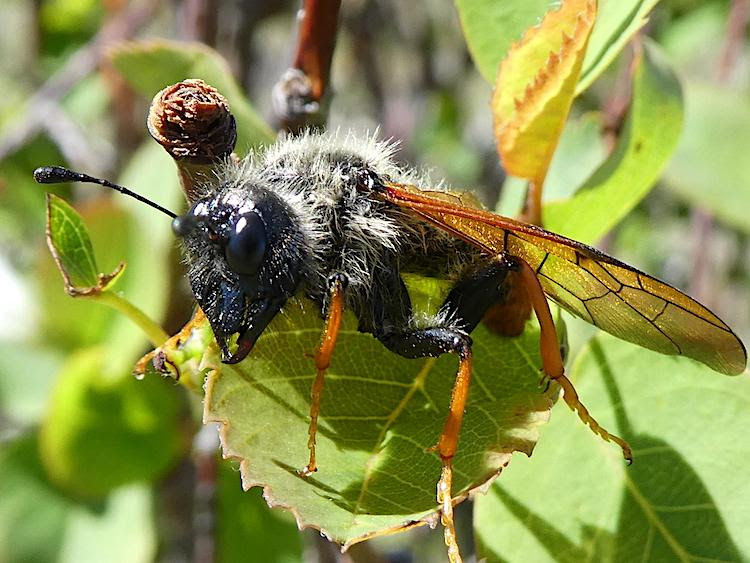
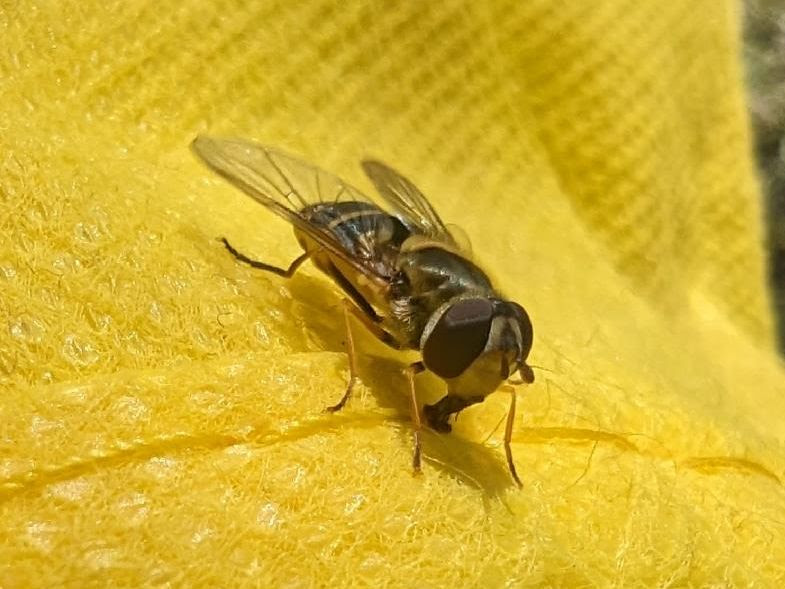
Common Flower Fly
Tribe Syrphini
Syrphid flies do a great job at making you think you’re dealing with a wasp, hornet, or bee. Often seen hovering near or perched on flowers, the adults feed on pollen and nectar. Depending on the species, larvae feed on decaying plant or animal matter and other insects (aphids and leafhoppers). These flies are also important pollinators of various wild plants and crops worldwide. While different species may show a preference for specific flowers, they appear to prefer white and yellow colored flowers.
Heather McKee, May 9th, 2024. Fort Missoula, Missoula, MT.
Calligrapher Beetle
Calligrapha verrucosa
Calligrapher beetles are some of the most stunning leaf beetles in the family Chrysomelidae. The group boasts well over 35,000 described species, all ranging in size, shape, and color. Calligrapha verrucosa closely resembles the Common Willow Calligrapher Beetle (Calligrapha multipunctata) but exhibits a reddish pronotum and overall hue. Like most species in this large family, both consume willow and are limited to very few or even a single food source.
Misty Nelson, May 10th, 2024. Brown’s Lake, Ovando, MT.
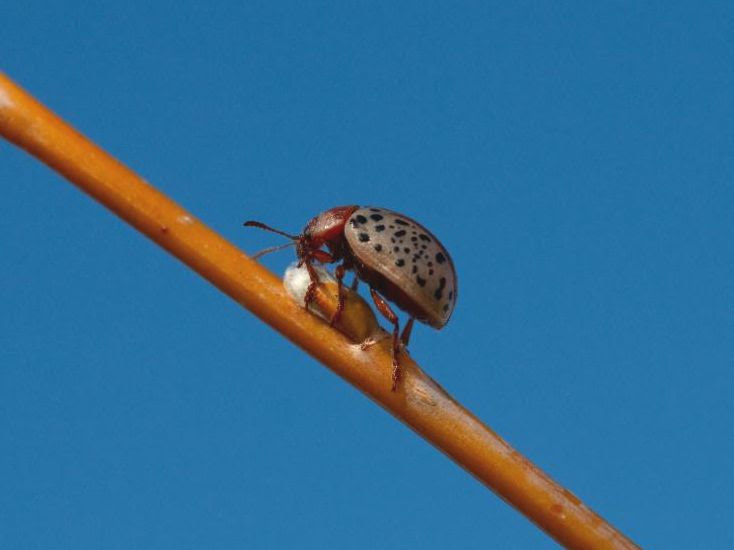
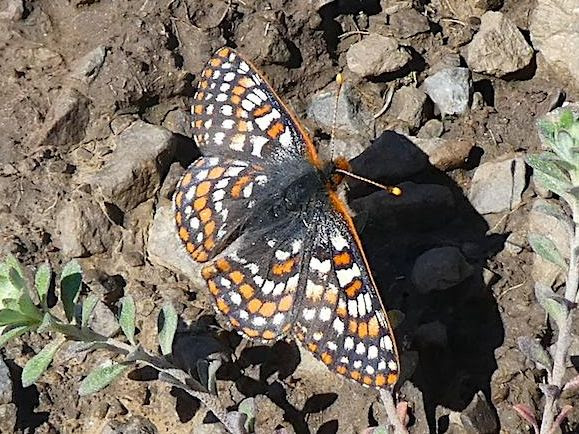
Variable Checkerspot
Euphydryas chalcedona
The variable checkerspot is another example of a butterfly whose taxonomic classification is debated among experts. Found in western North America, some argue that all E. chalcedona north of California should be considered E. colon (the Snowberry checkerspot), but evidence to support these two as separate species is lacking. This species overwinters in its larval stage, entering diapause to wait until spring. In higher elevations, larvae may stay in diapause for several years. Once emerging, they pupate, with adults on the wing for a short 15 days between mid-April and June.
Glenn Marangelo, May 11th, 2024. CSKT Bison Range, Charlo, MT.
Nomad Bee
Nomada sp.
There are about 280 species of Nomad bees in North America. They are evolutionarily unique because they do not collect pollen to feed their offspring; instead, they steal it. Known as kleptoparasites, the adult bees enter the nest of a host species and lay eggs. Their emerging larvae will then steal the resources the host has already collected. Sleeping Nomad bees can be found dangling from plant stems by their mandibles.
Misty Nelson, May 10th, 2024. Brown’s Lake, Ovando, MT.
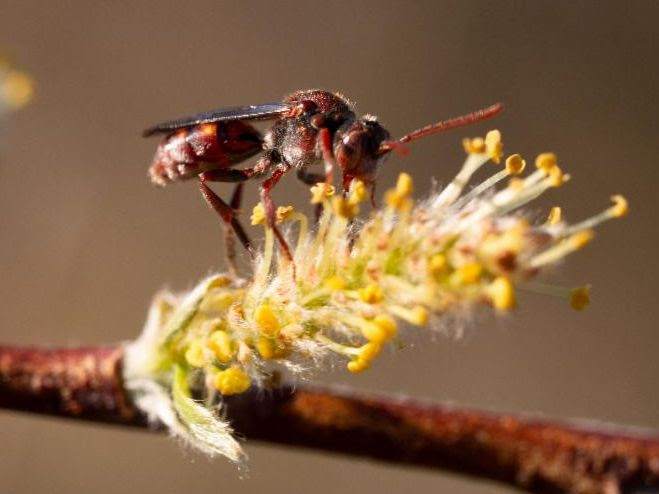
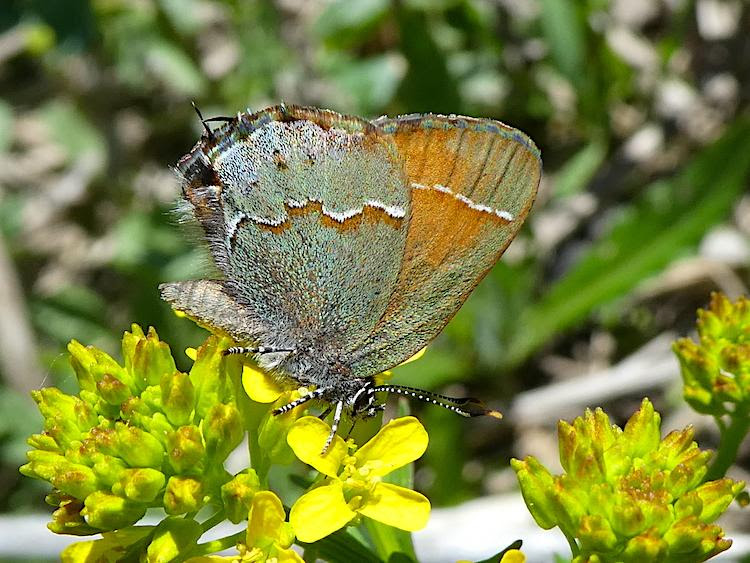
Siva Juniper Hairstreak
Callophrys gryneus ssp. siva
While the Juniper Hairstreak (C. gryneus) is striking and easily recognizable, it shows regional variation in patterning and color, resulting in several subspecies with overlapping ranges and hybrids. The Siva subspecies is found throughout the Rocky Mountain West in dry, open fields and bluffs, usually where juniper and cedar varieties (their host plants) are present. Males often perch in cedar trees to wait for females and become territorial if other males approach.
Glenn Marangelo, May 11th, 2024. CSKT Bison Range, Charlo, MT.
Sheridan’s Hairstreak
Callophrys sheridanii
Callophrys sheridanii, the official state butterfly of Wyoming, can be found in dry, open habitats at relatively high elevations (up to 10,000 feet). They are found in North America along the south coast of British Columbia and parts of Nevada, Arizona, Saskatchewan, North Dakota, and New Mexico. Unlike many species within the genus Callophrys, the striking teal-green Sheridan Hairstreak is “tailless.”
Glenn Marangelo, May 11th, 2024. CSKT Bison Range, Charlo, MT.

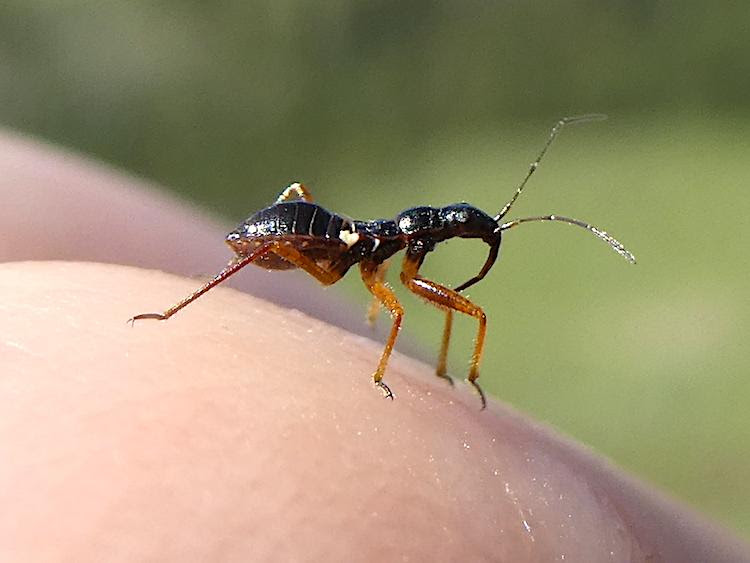
Black Damsel Bug Nymph
Nabis subcoleoptratus
Damsel bugs are predatory true bugs, similar to the considerably more formidable-sounding assassin bugs. However, they are more slender and “delicate” looking, perhaps lending to their name. Adults overwinter in leaf litter, and their short lifespan means some warmer climates may see up to five generations per year. There are 400 species of Damsel Bugs (family Nabidae) found worldwide and 40 species found across North America, including Alaska and Hawaii.
Glenn Marangelo, May 11th, 2024. CSKT Bison Range, Charlo, MT.
Large Marble
Euchloe ausonides
Many butterflies may appear white as they fly by, but if you catch one perched to sip nectar for a few seconds, you’ll notice some incredible differences. The Large Marble flies from May to early July and frequents open forested areas, particularly around pines (stream margins, hillsides, meadows, forest paths, and farmland). It is a medium-sized butterfly with a wingspan of up to 2 inches. It can be found primarily in western North America, from Alaska and the Yukon to California and Northern New Mexico. The larvae feed on a wide variety of members of the mustard family.
Glenn Marangelo, May 11th, 2024. CSKT Bison Range, Charlo, MT.
